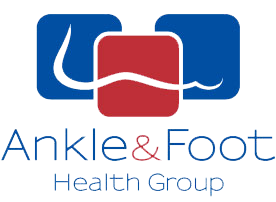Bunion
What is it?
A bunion (known is medical terms as Hallux Valgus) is a deformity in which the big toe leans toward the second toe, rather than it pointing straight ahead. Visually there may also be a bump on the side of the big toe joint.
What causes it?
Genetically inherited poor foot structure and biomechanics are the main cause of hallux valgus and exacerbating factors include restrictive footwear and foot injuries.
Signs and Symptoms
Common symptoms include pain and aching, inflammation and redness, calluses or corns, ingrown toenail and restricted motion of the toe.
How is it treated?
Early treatment using orthotics is aimed at reducing the pain of bunions and slowing their progression but will not reverse the deformity. Surgical review may be indicated when the deformity is at a stage where conservative treatment options are no longer controlling symptoms or the toe position.
Hallux Limitus and Hallux Rigidus
What is it?
These terms describe two of the most common forms of foot arthritis. Hallux Limitus indicates reduced movement at the big toe joint. Hallux Rigidus indicates a big toe joint that has lost all movement.
What causes it?
When limitation of normal function occurs, arthritis begins to develop. Degenerative arthritis is a condition where the joint surface, the articular cartilage, begins to wear out.
Signs and Symptoms
Pain and swelling in the joint, a bump that develops on top of the foot, stiffness in the big toe and lateral (outside) foot pain due to compensation.
How is it treated?
The aim of treatment is to reduce the severity of pain and correct biomechanical abnormalities to utilise what motion still exists in the joint. This is done through the use of foot orthotics and footwear.
Bunion
What is it?
A bunion (known is medical terms as Hallux Valgus) is a deformity in which the big toe leans toward the second toe, rather than it pointing straight ahead. Visually there may also be a bump on the side of the big toe joint.
What causes it?
Genetically inherited poor foot structure and biomechanics are the main cause of hallux valgus and exacerbating factors include restrictive footwear and foot injuries.
Signs and Symptoms
Common symptoms include pain and aching, inflammation and redness, calluses or corns, ingrown toenail and restricted motion of the toe.
How is it treated?
Early treatment using orthotics is aimed at reducing the pain of bunions and slowing their progression but will not reverse the deformity. Surgical review may be indicated when the deformity is at a stage where conservative treatment options are no longer controlling symptoms or the toe position.
Hallux Limitus and Hallux Rigidus
What is it?
These terms describe two of the most common forms of foot arthritis. Hallux Limitus indicates reduced movement at the big toe joint. Hallux Rigidus indicates a big toe joint that has lost all movement.
What causes it?
When limitation of normal function occurs, arthritis begins to develop. Degenerative arthritis is a condition where the joint surface, the articular cartilage, begins to wear out.
Signs and Symptoms
Pain and swelling in the joint, a bump that develops on top of the foot, stiffness in the big toe and lateral (outside) foot pain due to compensation.
How is it treated?
The aim of treatment is to reduce the severity of pain and correct biomechanical abnormalities to utilise what motion still exists in the joint. This is done through the use of foot orthotics and footwear.

